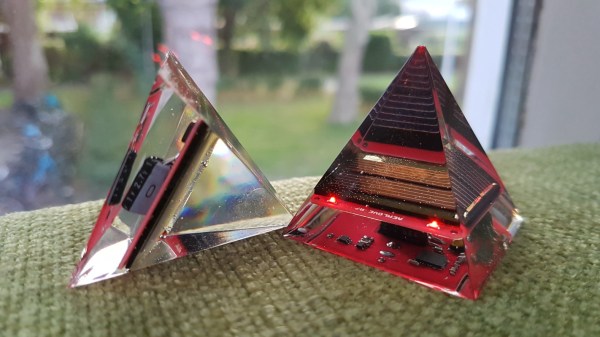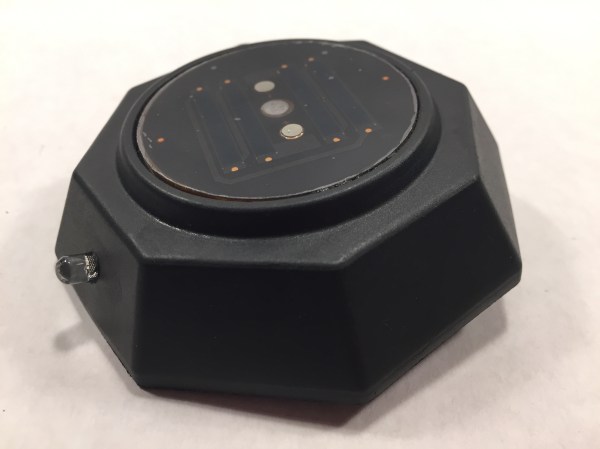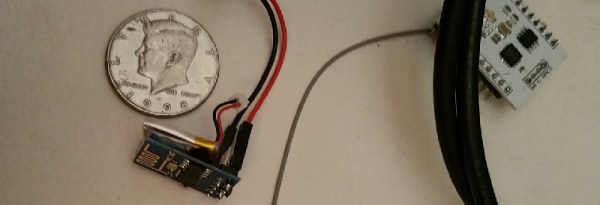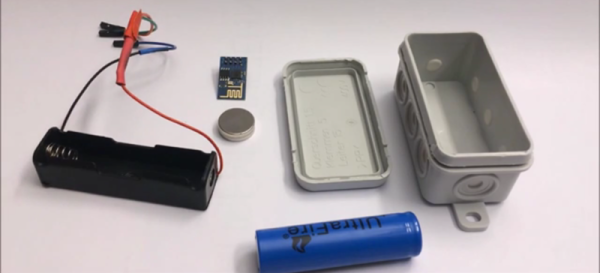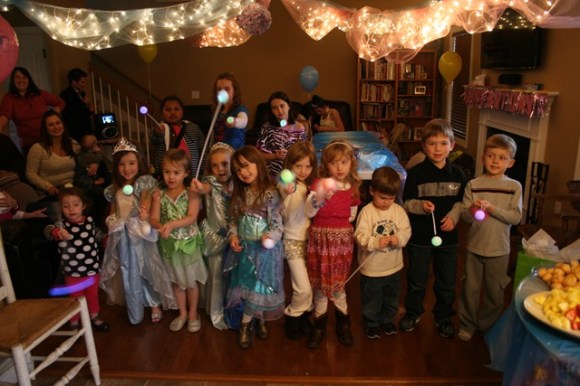A few years ago a fad ripped through the makersphere where people would build cheap, solar powered LED blinkers, glue a magnet to them, and throw them on anything metal. It was an interesting time, but luckily did not last for too long. With some effort and craftsmanship, though, the solar throwie idea can be turned into something more elegant, though, such as this solar harvesting blinking gadget.
Like its predecessors, the device itself behaves simply, although this one is equipped with a small supercapacitor which can run the device for 8 hours without sun. It has a small solar panel which can charge the capacitor in five minutes, and from there the LEDs inside simply blink. The quality shows in the final packaging, as [Jasper] has taken to encasing them in epoxy shapes such as pyramids, for a nice paperweight or tchotchke. It is also noteworthy because of Jasper’s test device; since he is mass producing them he needed something to test each board for functionality before encasing them in the epoxy, and he built a small pen tester specifically for them too.
While the build is pretty straightforward, anyone looking to enclose a simple circuit in epoxy without bubbles or other problems might want to check this one out. It would also be a good platform for building other throwie-like projects on top of. In the past they didn’t just blink lights but also did things like run small Linux servers.

